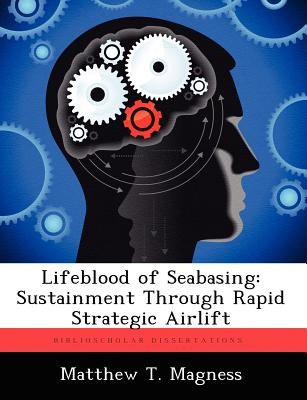
- We will send in 10–14 business days.
- Author: Matthew T Magness
- Publisher: BiblioScholar
- ISBN-10: 1249371759
- ISBN-13: 9781249371755
- Format: 18.9 x 24.6 x 0.6 cm, softcover
- Language: English
- SAVE -10% with code: EXTRA
Reviews
Description
The future of Seabasing rests with the capability to rapidly re-supply and sustain forces from strategic distances. Sealift presents one way of accomplishing this sustainment; however, it is slow. The solution for rapid long-range sustainment of a Seabase must come in the form of aircraft capable of lifting massive weights over vast distances and delivering them directly to the structure. This thesis explores the primary research question: What are the long-range, heavy lift aircraft programs that could sustain Seabasing? The question is explored by using the Wisconsin 7-Step Problem-Solving Strategy: state the problem, determine the solution criteria, gather needed information, generate potential solutions, compare solutions and problem, select the solution, and prepare communications. Four concepts were identified (Lighter-than-Air, Wing-in-Ground, Advanced Theater Transport, and Seaplanes) as having the capabilities to support Seabasing. Due to the many factors associated with determining the best solution, a technique of performing a grid analysis with weighted criteria is used. The results indicate that the best types of aircraft suited to sustain a Seabase are ones that are large, joint in development and operation, can be utilized outside standard military applications, and are capable of carrying massive payloads great distances.
EXTRA 10 % discount with code: EXTRA
The promotion ends in 16d.04:43:43
The discount code is valid when purchasing from 10 €. Discounts do not stack.
- Author: Matthew T Magness
- Publisher: BiblioScholar
- ISBN-10: 1249371759
- ISBN-13: 9781249371755
- Format: 18.9 x 24.6 x 0.6 cm, softcover
- Language: English English
The future of Seabasing rests with the capability to rapidly re-supply and sustain forces from strategic distances. Sealift presents one way of accomplishing this sustainment; however, it is slow. The solution for rapid long-range sustainment of a Seabase must come in the form of aircraft capable of lifting massive weights over vast distances and delivering them directly to the structure. This thesis explores the primary research question: What are the long-range, heavy lift aircraft programs that could sustain Seabasing? The question is explored by using the Wisconsin 7-Step Problem-Solving Strategy: state the problem, determine the solution criteria, gather needed information, generate potential solutions, compare solutions and problem, select the solution, and prepare communications. Four concepts were identified (Lighter-than-Air, Wing-in-Ground, Advanced Theater Transport, and Seaplanes) as having the capabilities to support Seabasing. Due to the many factors associated with determining the best solution, a technique of performing a grid analysis with weighted criteria is used. The results indicate that the best types of aircraft suited to sustain a Seabase are ones that are large, joint in development and operation, can be utilized outside standard military applications, and are capable of carrying massive payloads great distances.


Reviews